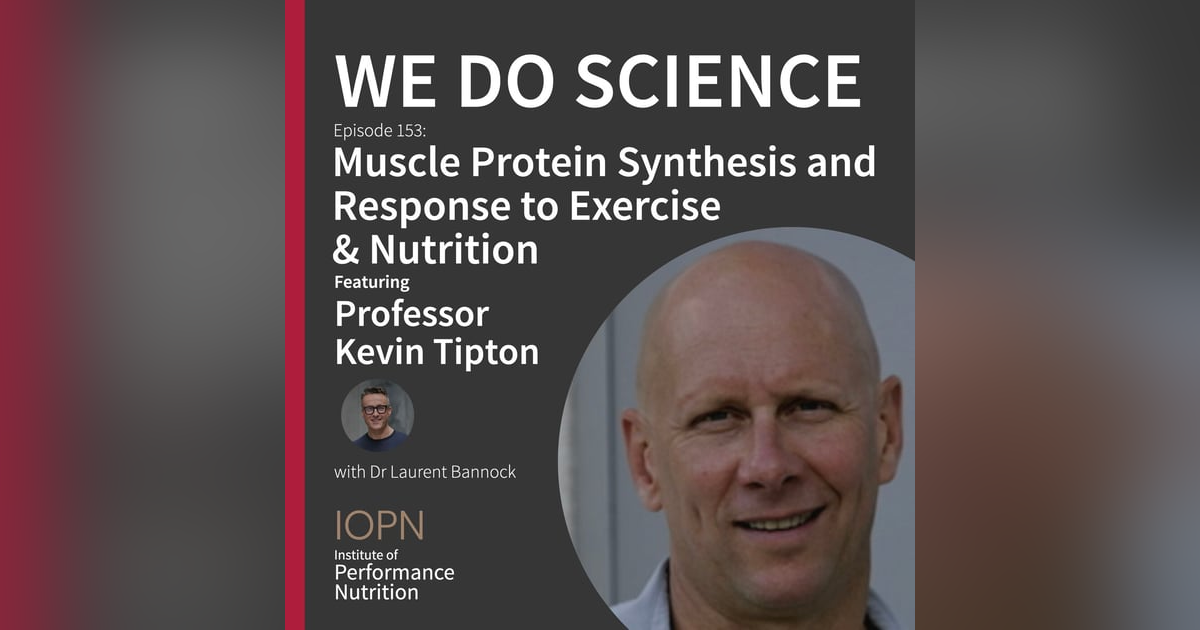Feb. 2, 2021
"Muscle Protein Synthesis and Response to Exercise & Nutrition" with Professor Kevin Tipton

Episode 153 of the Institute of Performance Nutrition's "We Do Science" podcast! In this episode, I (Laurent Bannock) discuss "Muscle Protein Synthesis and Exercise & Nutrition" with Professor Kevin Tipton (The Institute of Performance Nutrition, UK).
Discussion Topics Include:
- Defining Muscle Protein Synthesis (MPS)
- Acute MPS and Muscle Hypertrophy: The Relevance and Uncertainty
- MPS is not just Hypertrophy, but also Remodelling and Rapair
- Training Status and MPS
- Methods of Measurement
- Methodological Issues in Research & How this Should Impact Translation into Practice
- Physiology and MPS
Podcast Episode Transcript: Download PDF Copy
Key Paper(s) Discussed / Referred to:
- What is the relationship between the acute muscle protein synthesis response and changes in muscle mass?
- ARE NOT INTRACELLULAR HEAT AND NEURAL ELECTRICITY STRESSES THE CAUSE OF EXERCISE-INDUCED PROTEIN SYNTHESIS?
- A Review of Resistance Training-Induced Changes in Skeletal Muscle Protein Synthesis and Their Contribution to Hypertrophy
- The development of skeletal muscle hypertrophy through resistance training: the role of muscle damage and muscle protein synthesis
Related Podcast Episodes:
- #150 - "Muscle Protein Breakdown in Response to Nutrition and Exercise" with Professor Kevin Tipton
- #103 - 'Hypertrophy & Individual Differences in Response to Training' with Brandon Roberts PhD
- #101 - 'S&C Science, Muscle Plasticity, and Practice Epistemology' with Andy Galpin PhD
- #42 - 'Mechanisms of Muscle Hypertrophy' with Brad Schoenfeld PhD
Check out our other podcasts, publications, events, and professional education programs for current and aspiring sports nutritionists at www.TheIOPN.com and follow our social media outputs via @TheIOPN







